A drummer’s setup is a personal expression of their style, genre preferences, and performance needs. The Right Drum Setup Ideas can elevate a drummer’s experience, offering both comfort and versatility. Whether you’re a beginner or an experienced player looking to refine your setup, understanding the various drum kit configurations is crucial.
This guide explores popular drum setup ideas, their components, and how to choose the best configuration for your needs. It also answers common questions to help drummers make informed decisions.
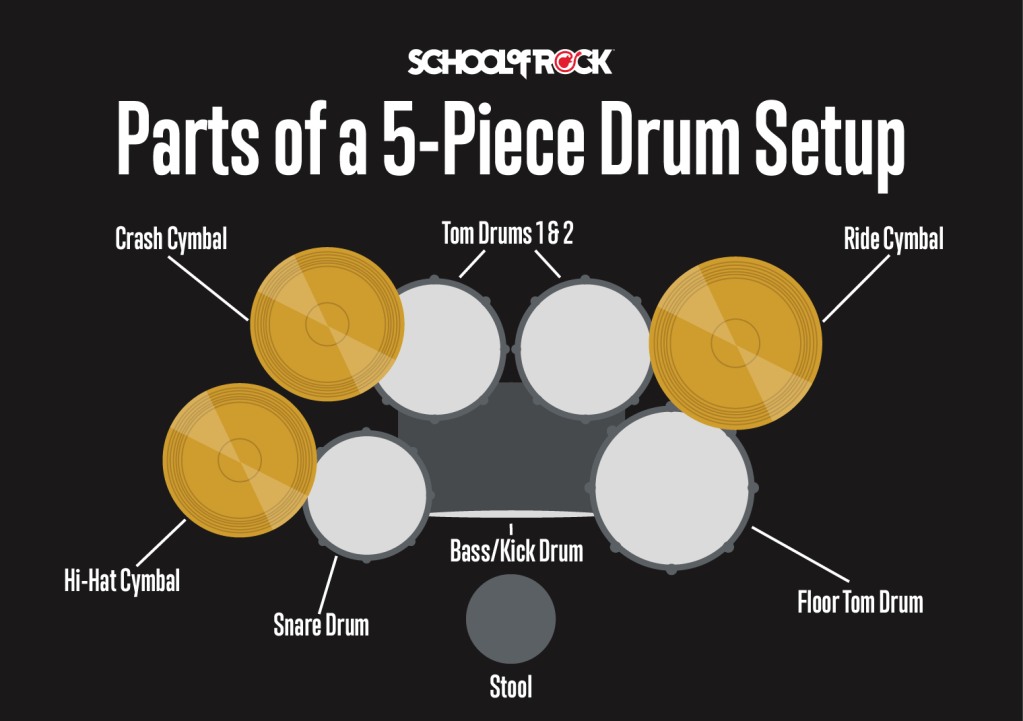
Standard Drum Kit Setup
The standard drum kit is the most common configuration and is often used across genres like rock, pop, and jazz. This setup typically includes:
- Bass Drum: The largest drum, played with a foot pedal, providing the foundation of the beat.
- Snare Drum: Known for its crisp, sharp sound, the snare is central to most rhythms.
- Tom-Toms: Usually consisting of two rack toms and one-floor tom, these provide tonal variety.
- Hi-Hat Cymbals: A pair of cymbals mounted on a stand, operated with a foot pedal for closed or open sounds.
- Crash Cymbal: Used for accents and emphasis.
- Ride Cymbal: Offers a sustained, steady rhythm.
This configuration is ideal for beginners due to its simplicity and versatility. It provides the fundamental components needed to play most musical styles.
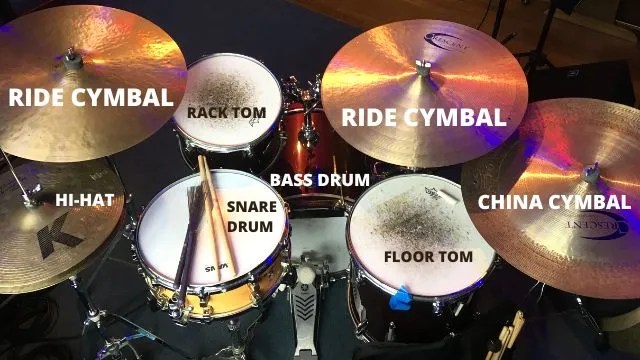
Jazz Drum Setup
Jazz drummers often prefer a more minimalist setup that emphasizes finesse and subtlety. A typical jazz drum kit includes:
- A smaller bass drum (18-inch or 20-inch) for a softer, more controlled sound.
- A highly responsive snare drum to capture intricate dynamics.
- One or two toms for melodic phrasing.
- A ride cymbal with a clear bell tone is essential for jazz rhythms.
- A crash cymbal and a hi-hat with a lighter sound.
The compact size of this setup makes it ideal for small venues and intimate performances. Jazz drummers often prioritize tonal quality and dynamic control over sheer volume.
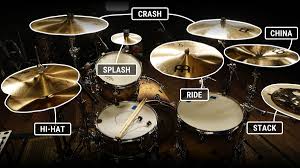
Rock Drum Setup
Rock drummers require a powerful setup to cut through amplified instruments. A typical rock drum configuration includes:
- A larger bass drum (22-inch or more) for a booming sound.
- A snare drum with a tight, aggressive tone.
- Two to three rack toms and one or two-floor toms for a fuller sound.
- Multiple crash cymbals for dynamic accents.
- A ride cymbal and a hi-hat to anchor the rhythm.
Additional components like splash cymbals, china cymbals, and auxiliary percussion can further expand the sound palette for rock drumming.
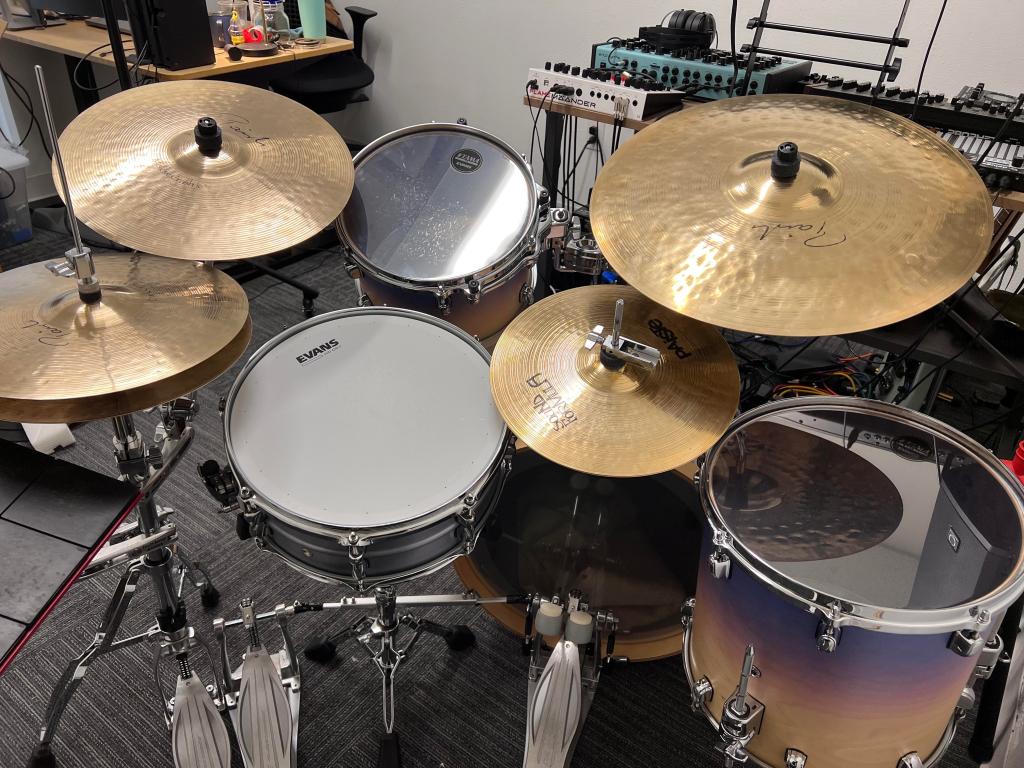
Fusion Drum Setup
Fusion drumming blends elements of rock, jazz, and funk, requiring a versatile drum kit. A typical fusion setup includes:
- A medium-sized bass drum (20-inch) for balanced power and tone.
- A snare drum that handles dynamic changes well.
- Two or more toms for melodic versatility.
- A hi-hat, crash cymbals, and a ride cymbal.
Fusion drummers often experiment with additional percussion elements like cowbells, tambourines, or electronic pads to enhance their sound.
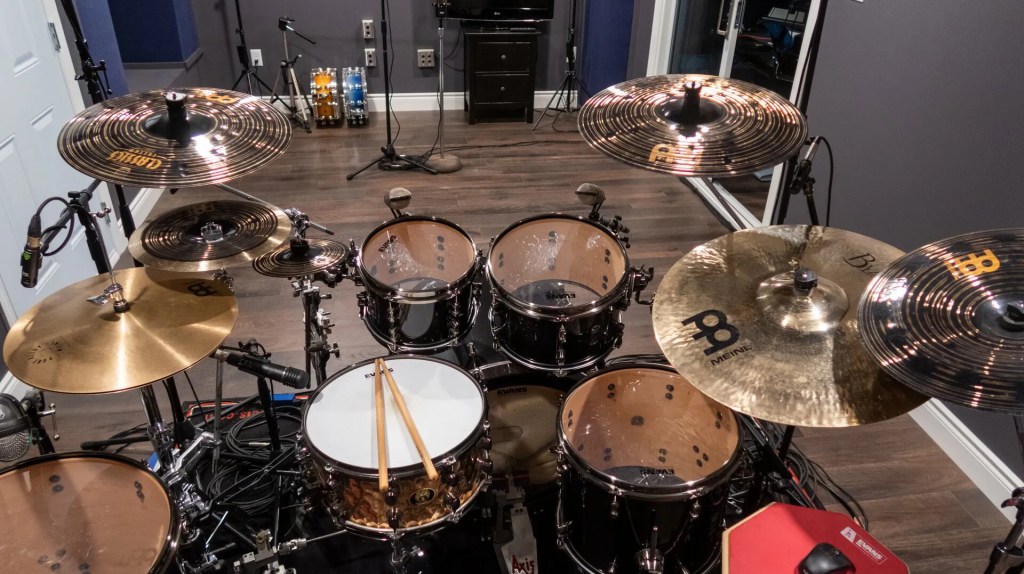
Double Bass Drum Setup
For genres like metal and progressive rock, speed and power are essential. A double bass drum setup features:
- Two bass drums or a double bass pedal for rapid footwork.
- A snare drum with a cutting tone.
- Multiple toms, including rack and floor toms, for intricate fills.
- A range of cymbals, including crashes, rides, splashes, and chinas.
This configuration is designed for drummers who prioritize technical precision and high-energy performance.
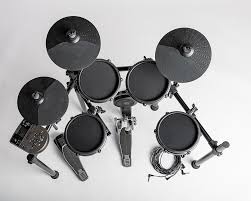
Electronic Drum Kit Setup
Electronic drum kits are perfect for practice, recording, or live performances where volume control is necessary. Key components include:
- A drum module (brain) that produces various drum and percussion sounds.
- Electronic drum pads that replicate the feel of acoustic drums.
- Cymbal pads and a hi-hat controller.
- A bass drum trigger and pedal.
These kits often feature customizable sound libraries and compact designs, making them ideal for versatile applications.
How to Choose the Right Drum Setup
1. Consider Your Genre
Your musical style plays a significant role in determining the best drum configuration. For instance, rock drummers may prioritize power, while jazz drummers focus on subtlety.
2. Assess Your Space
The size of your practice or performance area influences the type of drum kit you can accommodate. Compact setups are ideal for smaller spaces.
3. Budget Constraints
Drum kits vary widely in price. Beginners may start with an affordable standard kit, while professionals might invest in high-end or custom setups.
4. Experiment with Add-Ons
Adding percussion elements like cowbells, tambourines, or electronic pads can enhance your setup and allow you to explore new sounds.
FAQs
What is the most common drum kit configuration?
The standard Drum Kit Setup is the most common configuration, featuring a bass drum, snare drum, toms, hi-hat, crash cymbal, and ride cymbal. It is versatile and suitable for most genres.
Can I customize my drum kit setup?
Yes, drum kits are highly customizable. You can add or remove components based on your preferences, playing style, and genre requirements.
Are electronic drum kits a good alternative to acoustic drums?
Electronic drum kits are excellent for practice and recording. They offer volume control, customizable sounds, and compact designs, making them a versatile alternative to acoustic drums.
How do I choose the right cymbals for my kit?
Select cymbals based on your genre and playing style. For example, jazz drummers may prefer lighter, more responsive cymbals, while rock drummers might opt for louder, more durable options.
Do I need a double bass drum setup?
A double bass drum setup is typically used in genres like metal and progressive rock, where speed and power are crucial. If these styles appeal to you, consider investing in a double bass pedal or two bass drums.
Selecting the right Drum Setup Ideas is an essential step in a drummer’s journey. Each configuration serves unique purposes and suits specific genres and playing styles. Whether you prefer the simplicity of a standard kit or the versatility of a fusion setup, the key is to find what works best for you. With a well-thought-out configuration, drummers can maximize their potential and enjoy a seamless playing experience.
